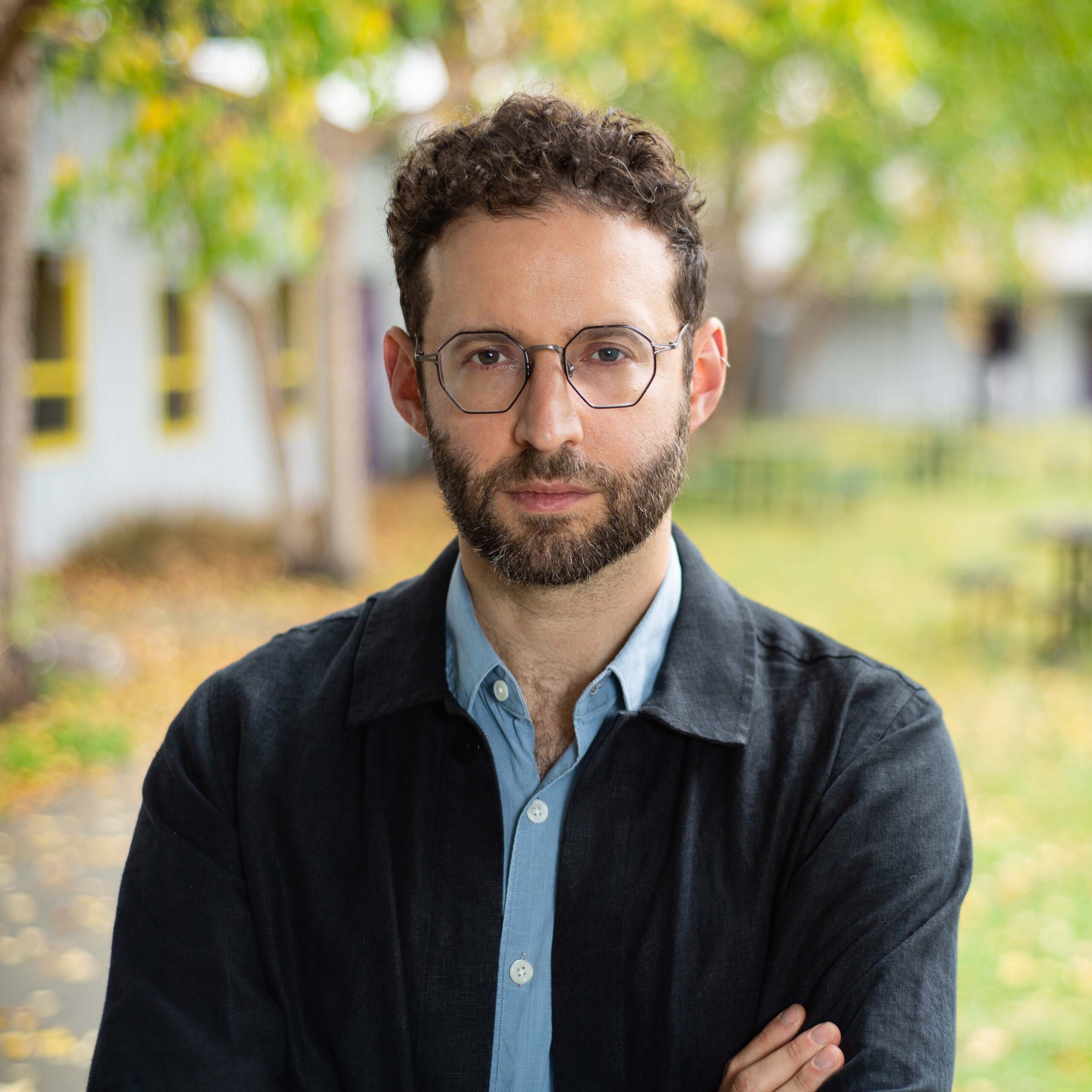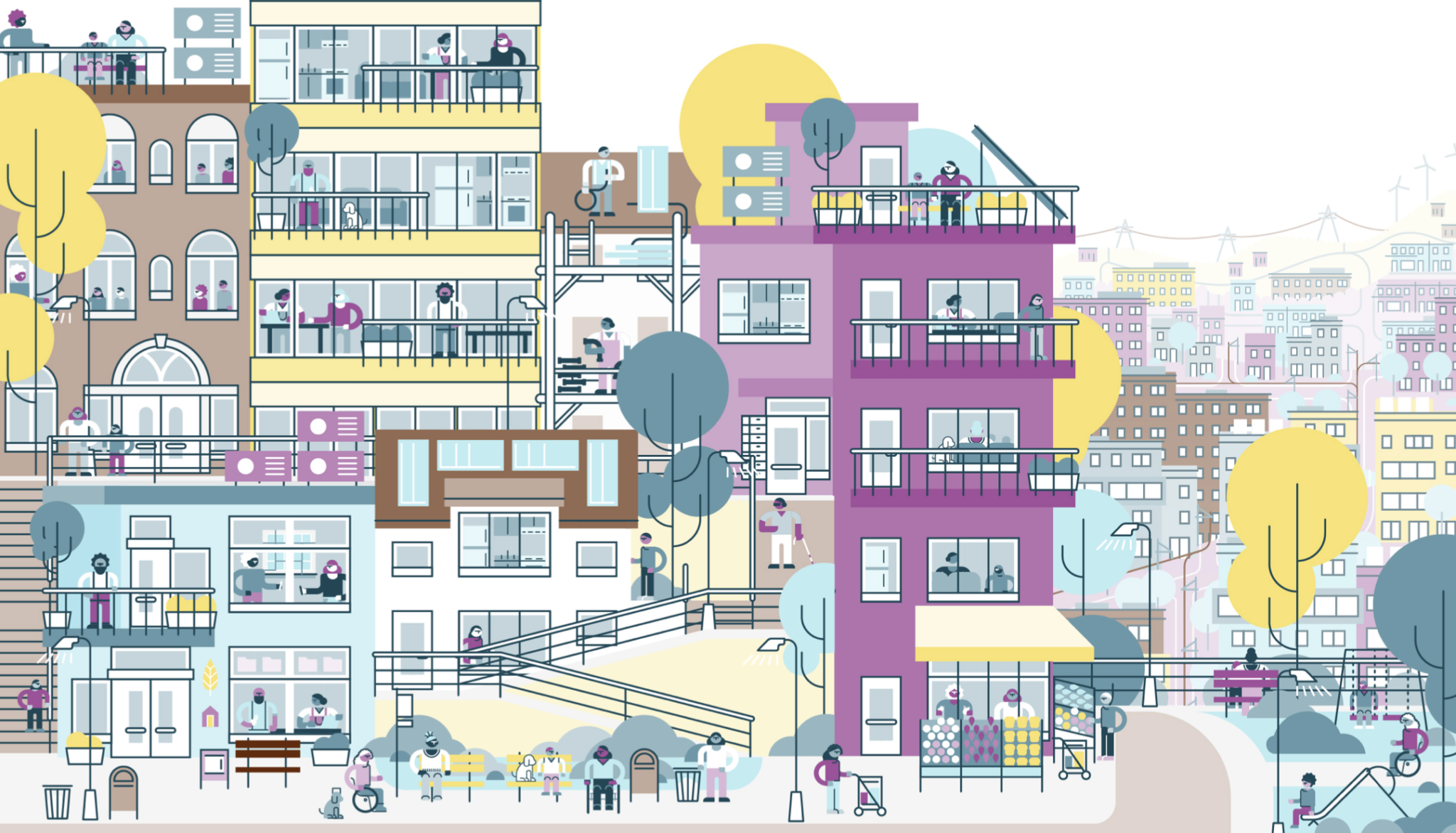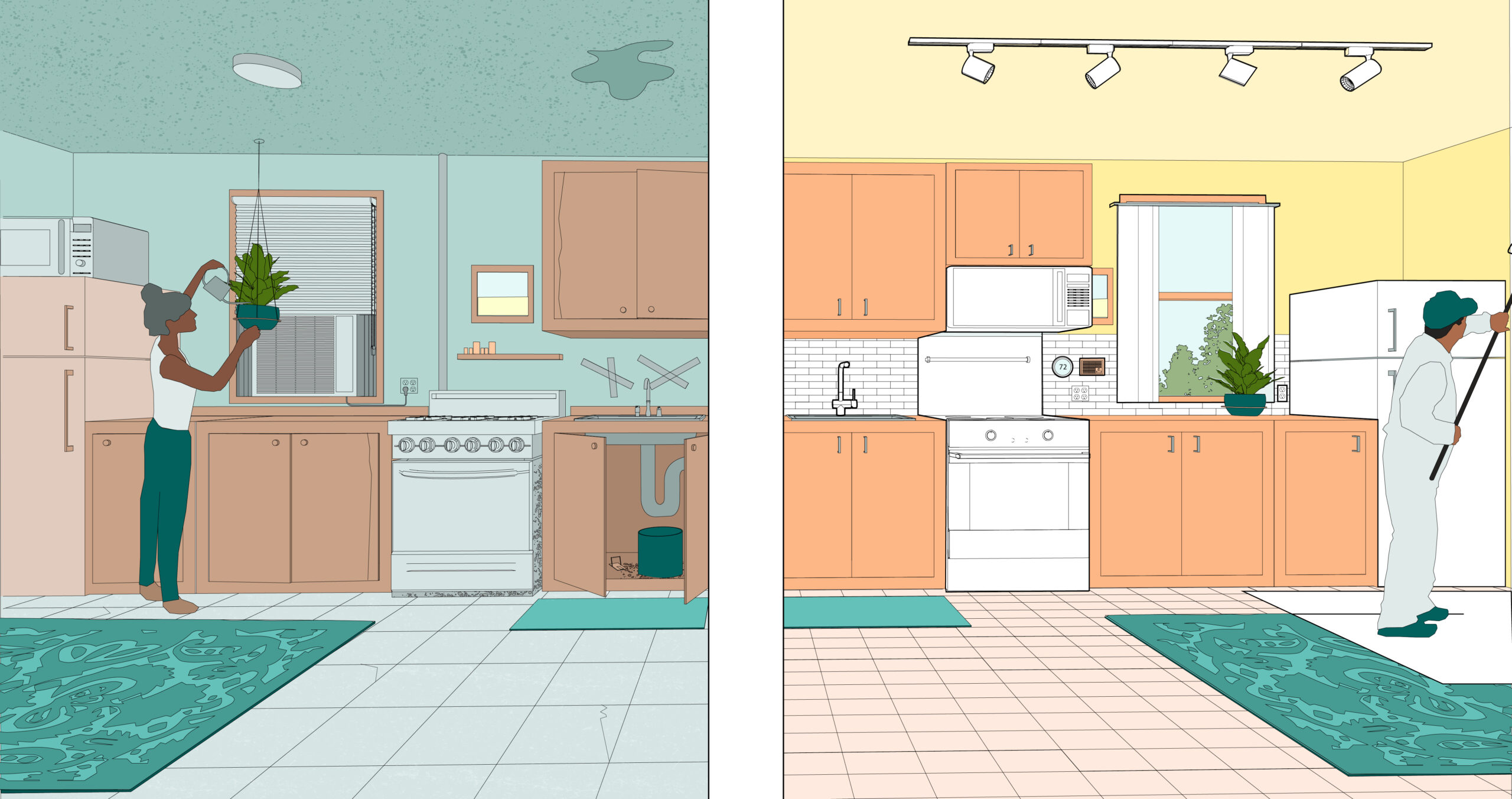The Case for a Green New Deal for Public Housing
The massive backlog of deferred maintenance for public housing in the United States demands a comprehensive, holistic solution that brings every unit in the country up to the highest health and environmental standards: A Green New Deal for Public Housing. This plan would deliver healthy green upgrades and deep-energy retrofits of the nation’s public housing stock to massively increase residents’ health and quality of life, finally remedy the long backlog of repairs in public housing, and eliminate all carbon pollution from public housing buildings, while creating badly needed, high quality jobs in the green economy for people in public housing communities. In so doing, a Green New Deal for Public Housing would also build on successful models in the US and abroad that have leveraged investments in public housing to accelerate green technologies throughout the buildings sector – benefiting consumers and hastening decarbonization well beyond only public housing.
The Green New Deal for Public Housing would end the era of the demolition, fragmentation, and privatization of public housing.
Public housing is facing an existential crisis. Chronic underfunding has created the conditions for a rapid decline of units, with the loss of one out of every four public housing units in just over a decade. Our analysis shows that between 2009 and 2022, the public housing stock has shrunk from 1.2 million units to just over 900,000 as a result of demolition, privatization or other conversions from Section 9. In the context of decades-long underfunding of public housing, the Rental Assistance Demonstration (RAD) emerged as an option to address the large and growing capital repairs backlog. RAD mandates a transfer of ownership or management from PHAs to other entities, who can then circumvent restrictions associated with traditional public housing funding streams and access additional funding from which PHAs are excluded. RAD can often entail the privatization of public housing, although the new managing entity can also be a tenant association, non-profit, or a public subsidiary of the PHA. RAD has accelerated – but did not initiate – the loss of Section 9 public housing in the United States. Since RAD began in 2012, 230,000 public housing units have already been converted or are in process to convert to this alternative ownership model.
New analysis of the Rental Assistance Demonstration (RAD) program shows we need a new approach.
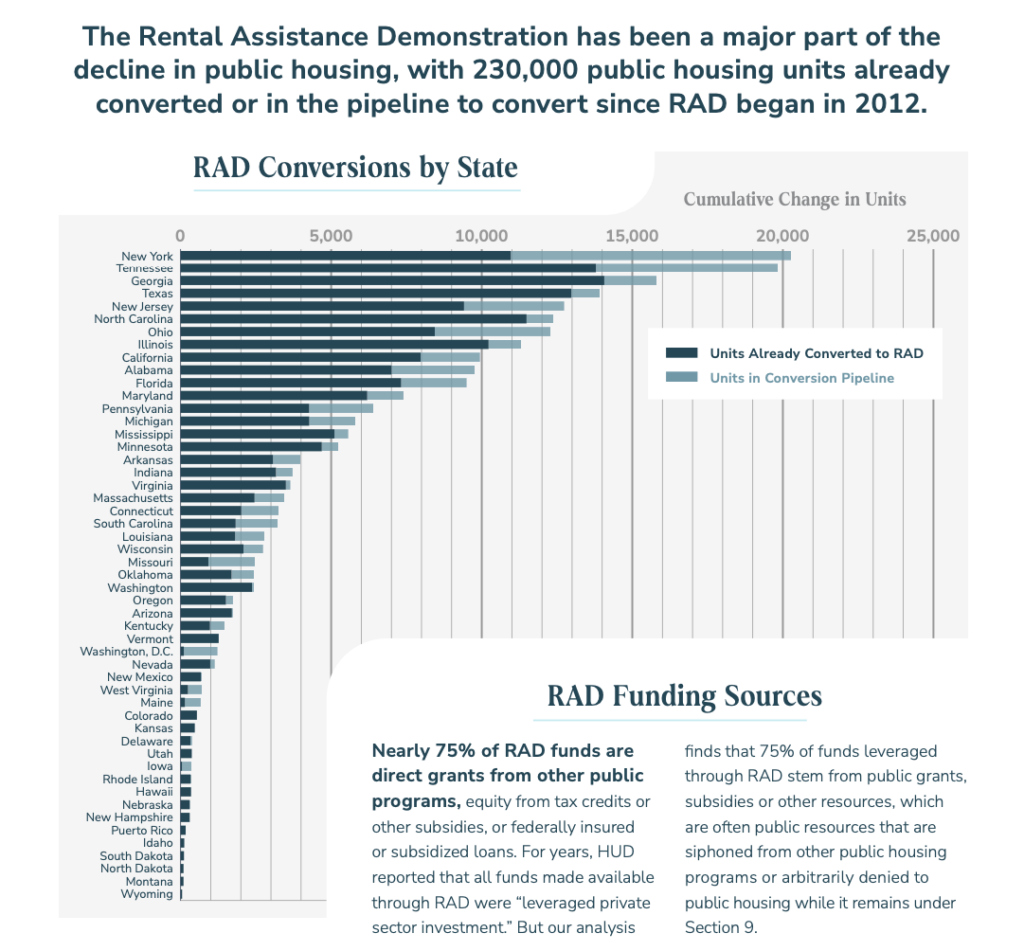
Green New Deal for Public Housing by the numbers.
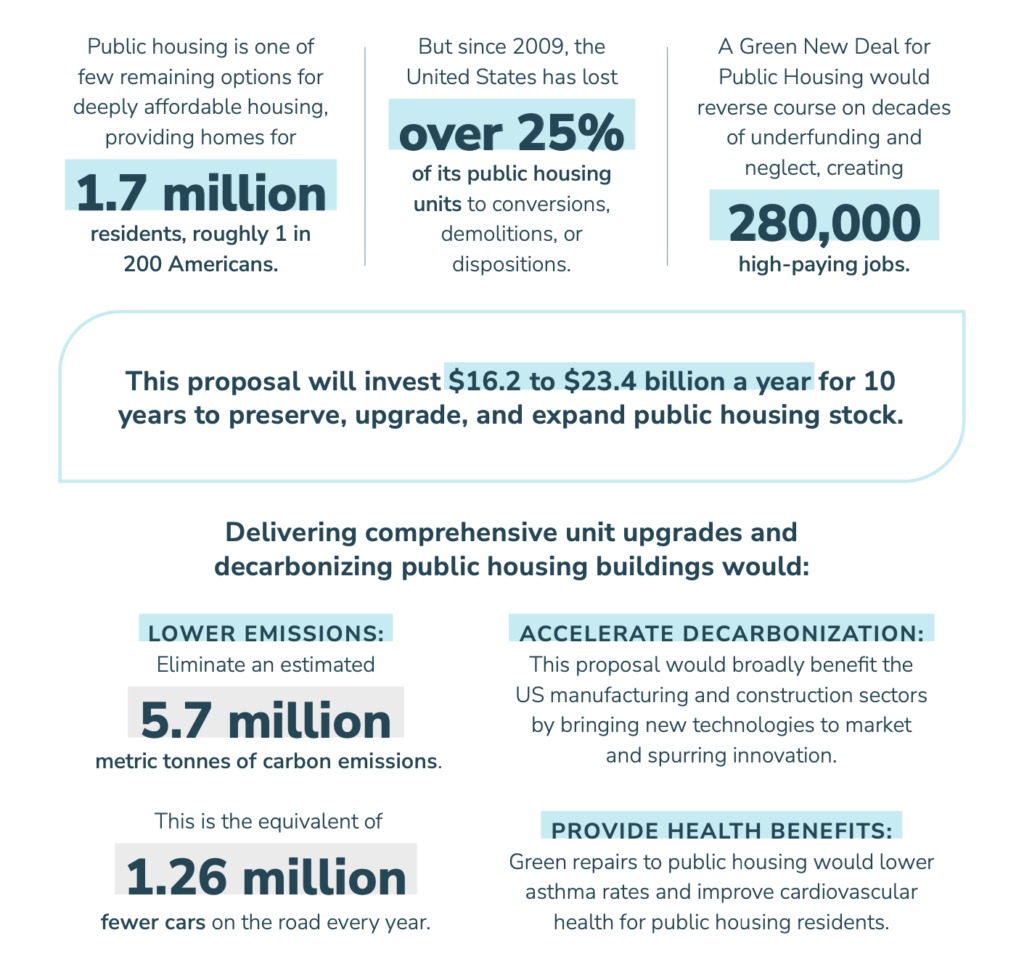
The delivery of green retrofits and repairs would restore safe, habitable, and comfortable homes for the 1.7 million Americans currently in Public Housing, laying the foundation for renewed investments in expanding this essential housing supply. And a Green New Deal for Public Housing would create an estimated 280,000 jobs over its 10-year spending period. Decarbonizing homes would often go hand-in-hand with increased health and comfort for residents, as when a new induction stove eliminates the need for cooking fuel, lowers emissions, and drastically improves indoor air quality. In some cases, benefits for resident health and comfort may be more pronounced than benefits in terms of emission reductions. Improving a building envelope—repairing cracks, replacing windows, and/or installing overcladding—would lower utility costs, but also help eliminate mold, which is currently a major health issue for many public housing residents. The repairs proposed would address urgent issues of resident health and safety while retrofits would decarbonize public housing, massively reduce energy needs, and also contribute to better living conditions. As a whole, the Green New Deal for Public Housing is an investment in public health, community resiliency, housing security, and eliminating carbon pollution, and its benefits would be diffuse across these areas.
The window of opportunity to save public housing is rapidly closing, as each year low-income renters find themselves with fewer public housing units to live in. Federal policymakers must urgently pass legislation to fully fund and improve public housing.

